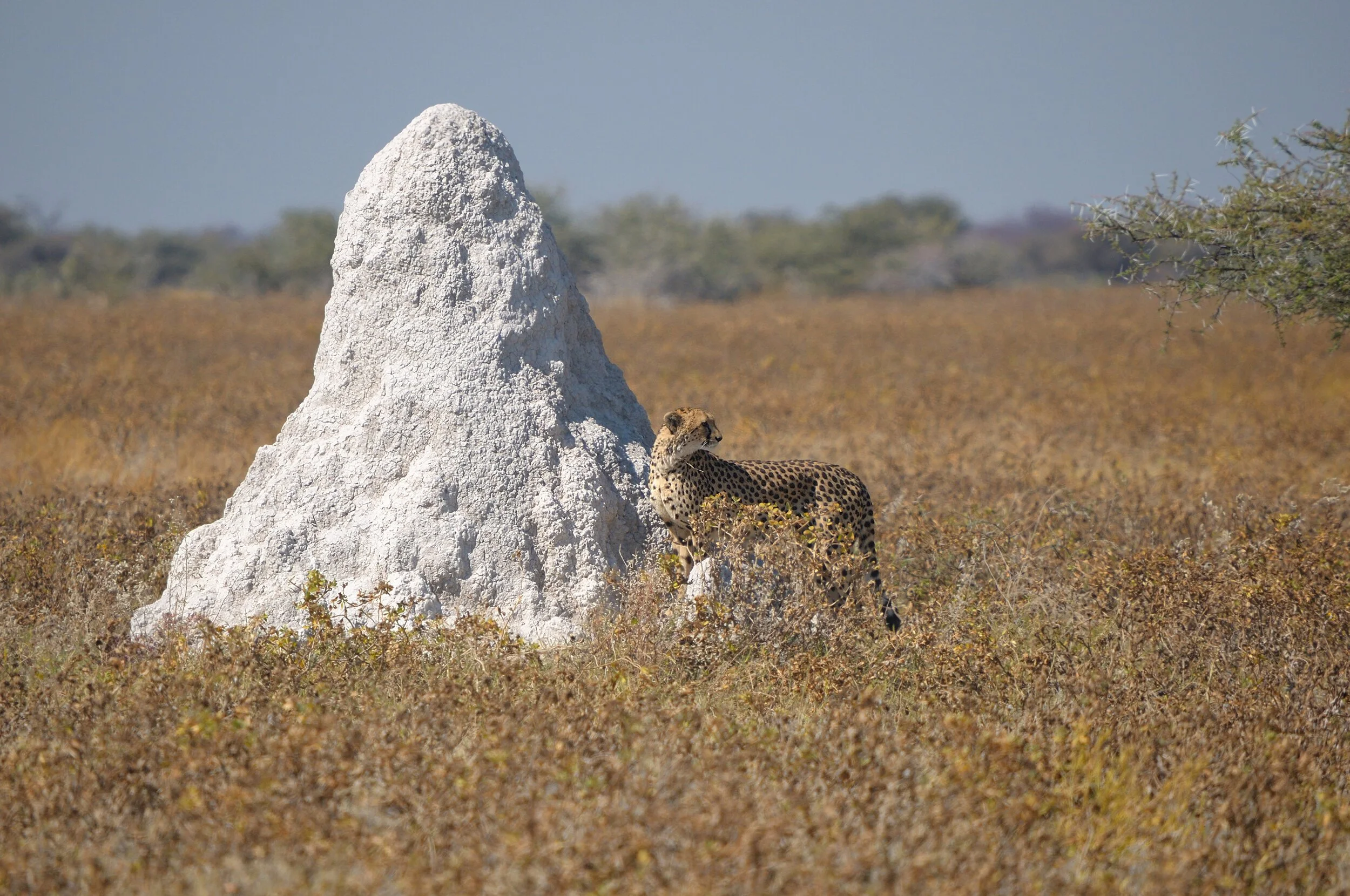What termites can teach architects
Editors note: Originally published on BBC Earth by Carolyn Fry
Termite mounds are proving to be an innovative source of inspiration to architects - could we benefit from using biomimicry to solve complex human challenges?
If there’s one thing Mother Nature’s good at, it’s being efficient. Take a termite mound, for example.
These conical mud towers that punctuate the parched red landscapes of the tropics are built by termites harvesting mud from below the ground, mixing it with saliva and extruding it. Each mound is the result of hundreds of insects making individual decisions on when and where to place these gobbets of ‘cement’, guided by climatic, environmental and social conditions. The constant war fought between competing termites for precious mud resources and desirable locations, and the repeated recycling of materials by weathering, results in an efficient and sustainable building. This finished termite ‘tower block’ is far larger a construction than an individual insect could build, and can house a vast colony of termites.
Inspired by insects
When it comes to the process of building homes for people, we have had it easy by comparison. With a bountiful supply of natural resources at our fingertips and the intelligence to use them innovatively, we have not been driven by such a need for efficiency in construction, where all a building’s uses (from heating to circulating air and harvesting energy from nature) are integrated seamlessly into the construction process from the outset. However, with the Earth’s population soon to exceed 10 billion, and the competition for dwindling natural resources becoming fiercer, we need to adopt an approach that is closer to that of termites. So how do we do that, without physically fighting our neighbours to build houses, and living in vast communities?
The term ‘biomimicry’ is given to human efforts to design and produce structures and systems modelled on nature. Architects and engineers have long sought to emulate nature when designing buildings but they have tended to focus on what a construction will look like and what it will be used for. Traditionally, this is how we have viewed nature, too. However, if we are to be motivated by efficiency when designing things, this is the wrong approach, says Rupert Soar, reader in sustainable technologies at Nottingham Trent University. He believes that if we are to truly take a leaf out of Mother Nature’s book, we must do so by mimicking nature’s processes; after all, it is the process by which termites build their mounds that results in the integrated nature of their form and function. We may be able to achieve this, thanks to a union of science, computing and engineering.
“If we are to truly take a leaf out of Mother Nature’s book, we must mimic nature’s processes.”
’In order to write computer programmes, you have to describe or code a process by which something happens so, as computing technology has advanced, we have begun producing people who understand processes,’ explains Soar. ’And, armed with new laboratory technologies, biologists have begun looking beyond an organism’s shapes and what it does, and have got down to the nitty-gritty of examining how it does it. They are examining how organisms build structures to regulate and control the world around them. So, thanks to technological advances, humanity is now examining and understanding the processes by which nature works in a way we’ve never been able to do before.’
Intelligent creations
A termite mound creates the conditions that a colony of millions of termites needs to thrive. It must protect the termites from the harsh environment, safeguard them against attacks by ants, and supply fresh air deep underground. Some mounds capture the heat of the sun during the day and the cooling effects of the night, to drive a complex circulation of air that flips direction twice a day, to provide fresh air to the colony. One human building inspired by these principles is the Eastgate Centre in Harare, Zimbabwe. It has a porous surface that helps to store and release heat during the day-to-night cycle, much like a termite mound. This has helped to slash the energy costs of running the building. However, the widespread adoption of natural processes within construction has not generally been possible because of financial constraints.
One further technological advance may be about to change that: the ability to undertake 3D printing on a large scale at a relatively low cost. The construction company Laing O’Rourke has just launched what it claims is the world’s biggest 3D printer assembly, which will make wax moulds for concrete construction components. Whereas engineers have historically mostly been limited to building in straight lines, this advance will facilitate the use of curves and will enable designers to incorporate aesthetic, structural, acoustic and thermal elements into one design, an approach more in tune with natural processes.
This advance has the potential to take biomimicry in a new direction. Architects will be able to physically replicate the processes by which organisms build habitats or biological membranes, to control the flow of heat, moisture or any other component of ‘comfort’. ’Understanding the processes of construction in nature demands knowing how organisms add and subtract material simultaneously, as they fight over limited resources, which produces efficiency,’ says Soar. ‘We’re now working on the next generation of 3D printers, which will sense the environment they’re printing into; some heads will add material while others subtract it simultaneously. It will take years to reach that point but that’s where we’re headed. It’s about recreating, within the digital sphere, the process of the bloody and fierce negotiation by which nature operates.’


